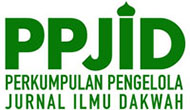Profil Bystander Bullying (Penonton Perundungan) di Sekolah Dasar
Abstract
Keywords
Full Text:
PDFReferences
Bandura, A. (1997). Bandura (Vol. 2). FrancoAngeli.
Borualogo, I. S., Wahyudi, H., & Kusdiyati, S. (2020). Prediktor perundungan siswa sekolah dasar. Jurnal Ilmiah Psikologi Terapan, 8(1), 26–42. https://doi.org/10.22219/jipt.v8i1.9841
Darley, J. M., & Latané, B. (1970). Norms and normative behavior: Field studies of social interdependence. In J. Macaulay & L. Berkowitz (Eds.), Altruism and helping behavior (pp. 83–102). Academic Press.
Eijigu, T. M., & Teketel, M. T. (2021). Bullying in schools: Prevalence, bystanders’ reaction and associations with sex and relationships. BMC Psychology, 9, 183. https://doi.org/10.1186/s40359-021-00685-5
Ejune, E. E. C., S., Nur’aini, F., Sari, D. P., & Supriyanto, A. (2025). Dinamika problematika peserta didik di sekolah dasar: Studi kasus bullying, kedisiplinan, dan dampak kondisi ekonomi keluarga: Penelitian. Jurnal Pengabdian Masyarakat dan Riset Pendidikan, 3(4), 4973–4981. https://doi.org/10.31004/jerkin.v3i4.1189
Espelage, D. L., & Hong, J. S. (2018). Children who bully or are bullied. In T. H. Ollendick (Ed.), The Oxford handbook of clinical child and adolescent psychology (pp. 1–28). Oxford University Press. https://doi.org/10.1093/oxfordhb/9780190634841.013.37
Espelage, D. L., & Swearer, S. M. (2003). Research on school bullying and victimization: What have we learned and where do we go from here? School Psychology Review, 32(3), 365–383. https://doi.org/10.1080/02796015.2003.12086206
Firmansyah, H., Sudiro, A., Cintya, S., & Besila, C. P. (2021). Pencegahan bullying terhadap masyarakat difabel dan berkebutuhan khusus di kalangan remaja. [Artikel tanpa nama jurnal].
Grecia, S. M., Weaver, K., Moskowitz, G. B., & Darley, J. M. (2002). Crowded minds: The implicit bystander effect. Journal of Personality and Social Psychology, 83(4), 843–853. https://doi.org/10.1037/0022-3514.83.4.843
Gunawan, A. F. (2023). Reoptimalisasi kebijakan hukum perlindungan anak dalam penanganan kasus perundungan (bullying) di Indonesia. Jurnal Fakta Hukum (JFH), 1(2), 74–83. https://doi.org/10.58819/jurnalfaktahukum(jfh).v1i2.54
Handayani, P., & Mahendra, Y. (2024). Perundungan di Sekolah Dasar Negeri 02 Sukamaju. Griya Cendikia, 9(2), 391–404. https://doi.org/10.47637/griyacendikia.v9i2.1307
Olweus, D. (1993). Bullying at school: What we know and what we can do. Blackwell Publishing.
Rahmelia, S., Prihadi, S., & Nopitha. (2023). Peranan guru pendidikan agama Kristen dan budi pekerti melalui pendekatan norma agama dan perubahan perilaku dalam mengatasi bullying antar siswa di SMPN Satu Atap-1 Katingan Tengah. EDULEAD: Journal of Christian Education and Leadership, 4(1), 40–50. https://doi.org/10.47530/edulead.v4i1.142
Salmivalli, C. (2010). Bullying and the peer group: A review. Aggression and Violent Behavior, 15(2), 112–120. https://doi.org/10.1016/j.avb.2009.08.007
Syahrizal, H., & Jailani, M. S. (2023). Jenis-jenis penelitian dalam penelitian kuantitatif dan kualitatif. QOSIM: Jurnal Pendidikan Sosial & Humaniora, 1(1), 13–23. https://doi.org/10.61104/jq.v1i1.49
Sukmawati, R., & Aliyyah, R. R. (2023). Strategi guru dalam mengatasi perundungan di sekolah dasar. Karimah Tauhid, 2(6), 2870–2890. https://doi.org/10.30997/karimahtauhid.v2i6.11067
Thornberg, R., Wänström, L., Hong, J. S., & Espelage, D. L. (2022). Defending or remaining passive as a bystander of school bullying in Sweden: The role of moral disengagement and antibullying class norms. Journal of Interpersonal Violence, 37(19–20), NP18017–NP18043. https://doi.org/10.1177/08862605211037427
DOI: http://dx.doi.org/10.24014/ittizaan.v8i2.38452
Refbacks
- There are currently no refbacks.
Copyright (c) 2025 Al-Ittizaan: Jurnal Bimbingan Konseling Islam

This work is licensed under a Creative Commons Attribution 4.0 International License.
 Indexed By:
Indexed By:
Al-Ittizaan Journal is licensed under a Creative Commons Attribution 4.0 International License.








.png)


